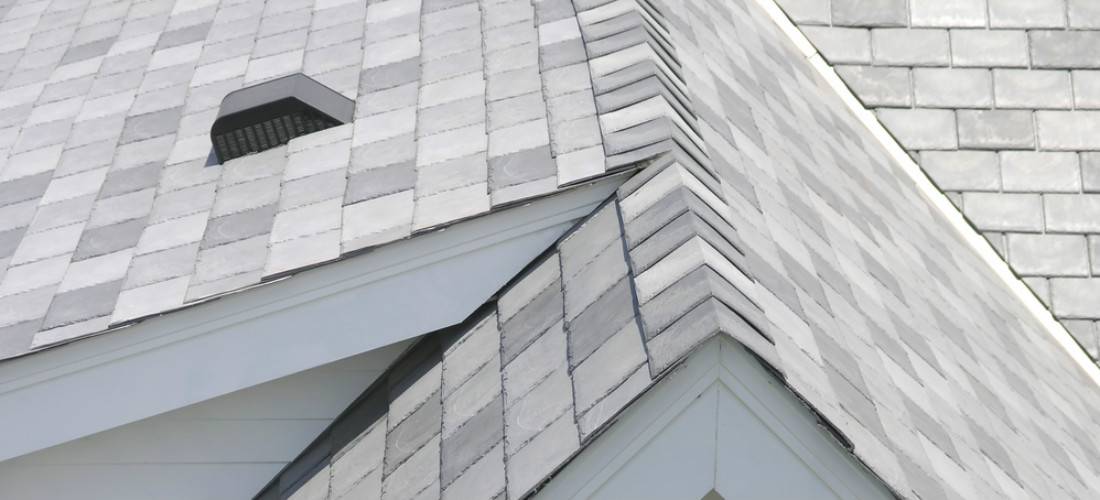A guide to installing hip and ridge asphalt shingles on your roof
Even the most expensive shingles won't protect your home if the job is not finished correctly. The final touches in a residential roofing job include hip and ridge shingles, which protect the most vulnerable parts of your roof. The following guide explains how to install hip and ridge asphalt shingles.

GAF ridge shingle First, you need to know about the hips and ridges. The ridge of your roof is the highest point, where many homes have a ridge vent to ensure adequate air movement in the attic. In roofing terms, hips are extensions of the ridge that slope downward. A roof that has several hips joining together at a peak with no ridge is called a hip roof. However, some roofs have both ridges and hips. The ridges and hips are the most vulnerable points of a roof to wind and rain because of their angles. They take a beating during storms, and they are most likely to bear the brunt of a branch falling on your roof. Also, they are dangerous to work on, as roofers are at the highest point of a roof when working on the ridge.
It is common for roofers to use 3-tab shingles and cut them apart for hip and ridge pieces. This may lower the roofing cost somewhat, and from the ground, you wouldn't be able to see the difference. But using a shingle not designed for ridges and hips can shorten the life of your roof and even void your roofing warranty. Asphalt shingle prices are lower than other types, so it won't cost considerably more to get the correct ridge cap for your home.
 Before you install asphalt roofing shingles, check that the roof decking is solid and clean. Install felt paper or other underlayment per the instructions of your shingle manufacturer, and add freeze protection if needed depending on your climate. Next, install the asphalt shingles from the bottom of the roof, moving up to the top. If your roof does not already have a ridge vent, now is the time to add one. They are recommended by building codes and roofing manufacturers for proper ventilation.
Before you install asphalt roofing shingles, check that the roof decking is solid and clean. Install felt paper or other underlayment per the instructions of your shingle manufacturer, and add freeze protection if needed depending on your climate. Next, install the asphalt shingles from the bottom of the roof, moving up to the top. If your roof does not already have a ridge vent, now is the time to add one. They are recommended by building codes and roofing manufacturers for proper ventilation.
Finally comes the ridge cap. If you are installing these pieces over a ridge vent, follow the guidelines of the vent manufacturer for nail placement. If no vent exists, you'll be installing your cap in overlapping pieces, being careful to match the lines with the shingles below. Hip shingles are much the same, only without a potential ridge vent to worry about.
Hip and ridge shingles are available from GAF, Owens Corning and other shingle manufacturers. They are designed to be wide enough to cover ridge vents, with nailing spaces placed where they should not come into contact with water. Be sure you purchase your hip and ridge shingles when you buy the rest of your shingles to ensure color match. Shingles are manufactured in batches, and the color of two different batches may differ.
If you are ready to install asphalt roofing shingles, get a roofing estimate that includes ridge and hip shingles. Whether you plan to install hip and ridge asphalt shingles yourself or have a contractor do it, QualitySmith can help you find the resources you need to do the job correctly.













Write a Comment